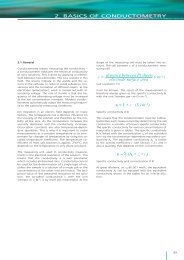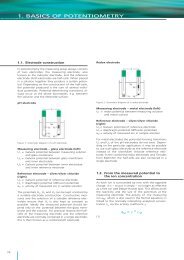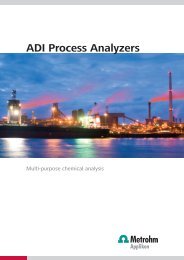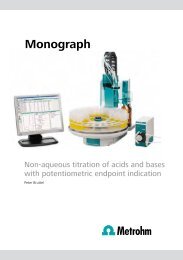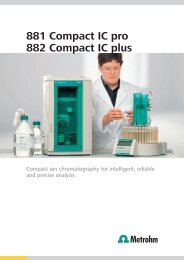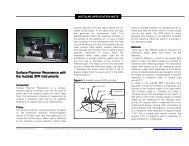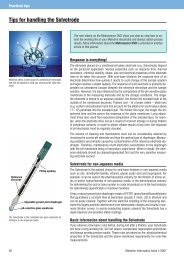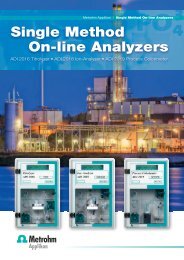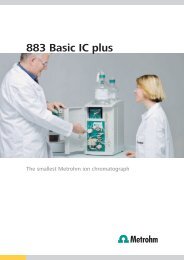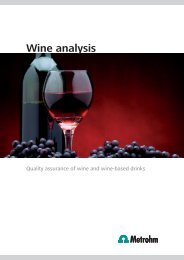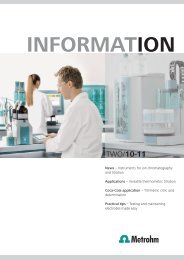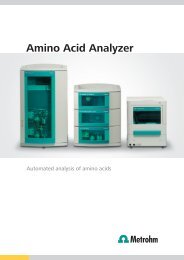Monograph - Metrohm
Monograph - Metrohm
Monograph - Metrohm
Create successful ePaper yourself
Turn your PDF publications into a flip-book with our unique Google optimized e-Paper software.
Practical thermometric titrimetry 27<br />
Fig. 19: Titration plot of back-titration<br />
of excess EDTA with Cu(II) in<br />
NH 3 /NH 4 Cl-buffered solution.<br />
A catalyzed endpoint procedure to determine trace amounts of metal ions in solution<br />
(down to approximately 10 mg/L) employs 0.01 mol/L EDTA. This has been applied to<br />
the determination of low level Cu(II) in specialized plating baths and to the determination<br />
of total hardness in water. The reaction enthalpies of EDTA with most metal ions are<br />
often quite low. Therefore titrant concentrations typically around 1 mol/L are employed<br />
with correspondingly high amounts of analyte in order to obtain sharp, reproducible<br />
endpoints. Using a catalytically indicated endpoint in combination with a back-titration,<br />
very low EDTA titrant concentrations can be used. An excess of EDTA solution is added.<br />
The excess of EDTA is back-titrated with a suitable metal ion such as Mn 2+ or Cu 2+ . At the<br />
endpoint, the first excess of metal ion catalyzes a strongly exothermic reaction between<br />
a polyhydric phenol (such as resorcinol) and hydrogen peroxide (see Figure 20).<br />
Fig. 20: Thermometric EDTA titration<br />
of trace Cu(II) by back-titration with<br />
Mn(II), in combination with catalytically<br />
enhanced endpoint detection<br />
using the exothermic reaction<br />
between hydrogen peroxide and a<br />
polyhydric phenol.




